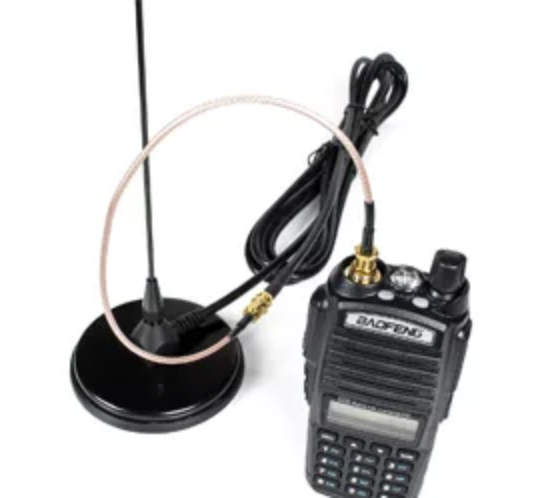How To Use Gmrs Repeater
One of the first things that many new radio amateurs practise is to purchase a handheld radio, like the BTECH UV-5X3 (correct), to talk with their friends on a local repeater. Subsequently programming the radio, they're oftentimes able to hear the repeater, but not access it. When this happens, the beginning question out of their mouths is, "Why tin't I hit the repeater?"
This is such a frequent problem, that there's fifty-fifty a question (T2B04) on the Technician Grade test that addresses this event:
Which of the following could be the reason you lot are unable to access a repeater whose output you can hear? (T2B04)
The correct reply is D) All of these choices are correct.
If you tin can hear a repeater, simply your point is not accessing the repeater, the offset affair to check is to make sure that your start is prepare properly. The offset is the difference between the repeater's receive frequency and the transmit frequency. On the two-meter band, the standard starting time is 600 kHz. On the lxx-cm band, the standard offset is 5 MHz. In addition to getting the first right, keep in mind that the transmit frequency may exist higher or lower than the receive frequency.
 In one case you're sure that you have the offset right, check to see if the repeater requires that your radio transmit a CTCSS to access it. CTCSS tones allow repeaters o receive item signals and reject others. For more information on how CTCSS tones work, see, "Get your CTCSS tones right to access repeaters."
In one case you're sure that you have the offset right, check to see if the repeater requires that your radio transmit a CTCSS to access it. CTCSS tones allow repeaters o receive item signals and reject others. For more information on how CTCSS tones work, see, "Get your CTCSS tones right to access repeaters."
In some cases, a repeater may crave a Digital Code Squelch, or DCS, tone to admission information technology. A DCS tone is like to a CTCSS tone in that it is sub-aural and opens the squelch of a repeater when a station is trying to access it. DCS tones are, however, very rarely used on the apprentice radio bands.
There are other reasons that y'all may not exist able to access a repeater. Perhaps the most common reason is that your signal but isn't potent enough. One way to overcome this is by using a better antenna. You might, for instance, replace the antenna that comes with your handheld transceiver with a Nagoya antenna. BTECH sells many different Nagoya antennas that simply screw right into your radio and improve the betoken of your handheld.
 Another pull a fast one on is to connect your radio to a mag-mount antenna, such as the Nagoya UT-308UV (shown at left), placed on a metal surface to provide a good ground airplane. This can also significantly ameliorate the quality of your signal. The Nagoya UT-308UV provides up to 4.xv dBi of proceeds and is designed to exist used with a handheld radio, merely yous tin too use a mag-mount antenna designed to be mounted on a vehicle, as long equally you lot have the right coax adapters.
Another pull a fast one on is to connect your radio to a mag-mount antenna, such as the Nagoya UT-308UV (shown at left), placed on a metal surface to provide a good ground airplane. This can also significantly ameliorate the quality of your signal. The Nagoya UT-308UV provides up to 4.xv dBi of proceeds and is designed to exist used with a handheld radio, merely yous tin too use a mag-mount antenna designed to be mounted on a vehicle, as long equally you lot have the right coax adapters.
Finally, if replacing the antenna doesn't do the trick, so consider purchasing an amplifier to heave the signal. An amplifier, like the BTECH AMP-V25, volition output 20 – 40 Due west, with a 2 – vi W input. The amplifier tin can be used in a vehicle or at your base station, and is a good alternative to purchasing a second, higher-power radio for situations when you need more power than a handheld can provide.
How To Use Gmrs Repeater,
Source: https://baofengtech.com/why-cant-i-hit-the-repeater/
Posted by: ferrarifichalfic.blogspot.com


0 Response to "How To Use Gmrs Repeater"
Post a Comment